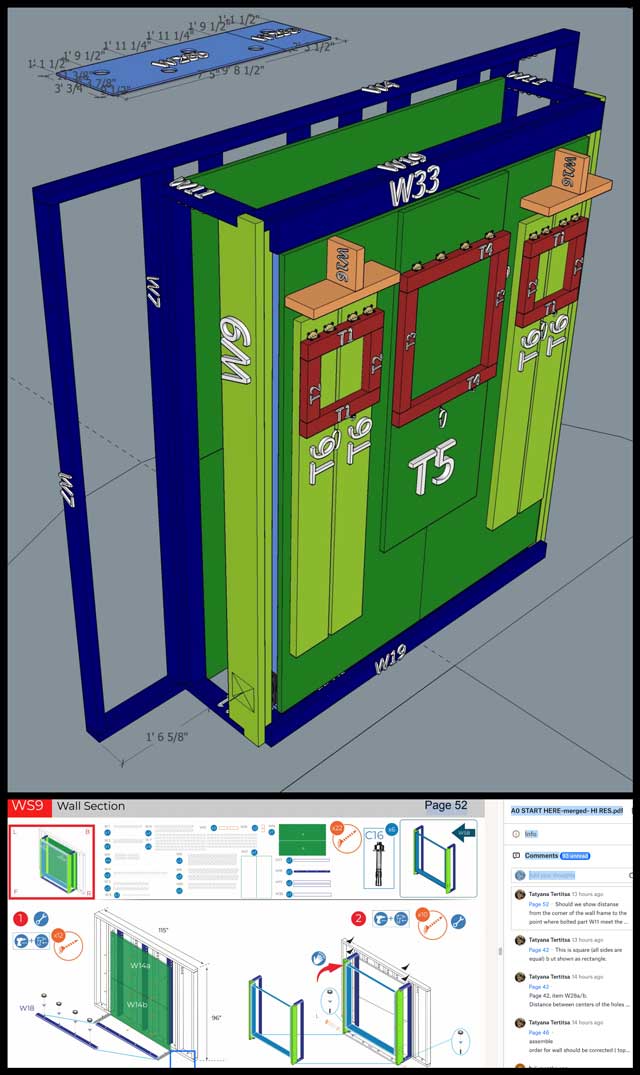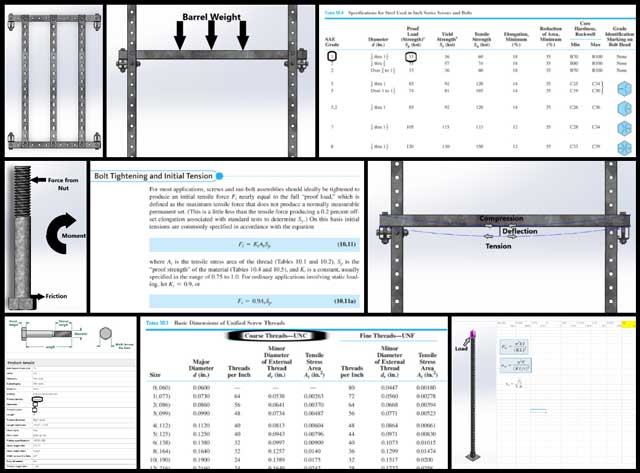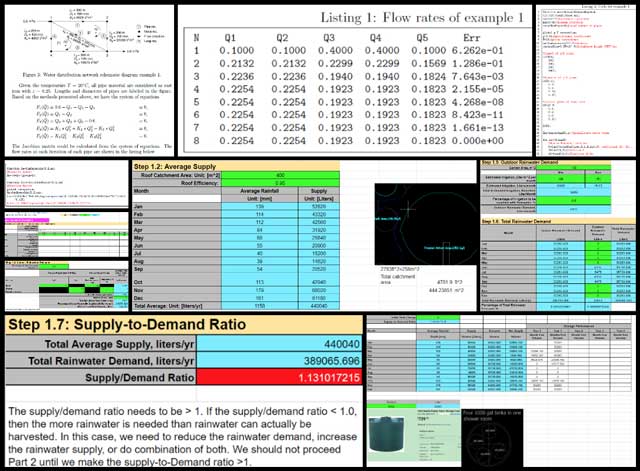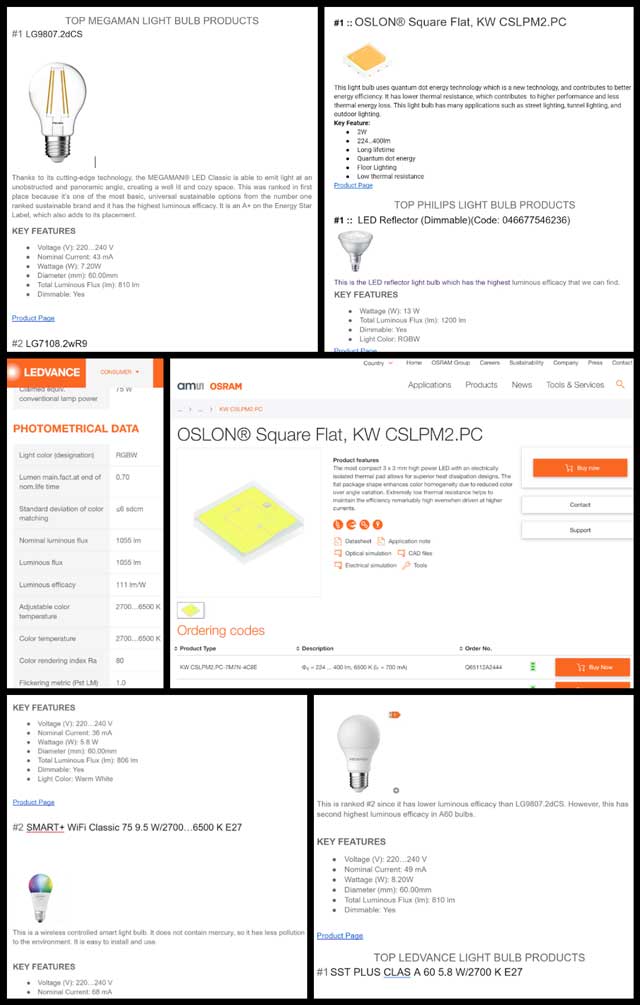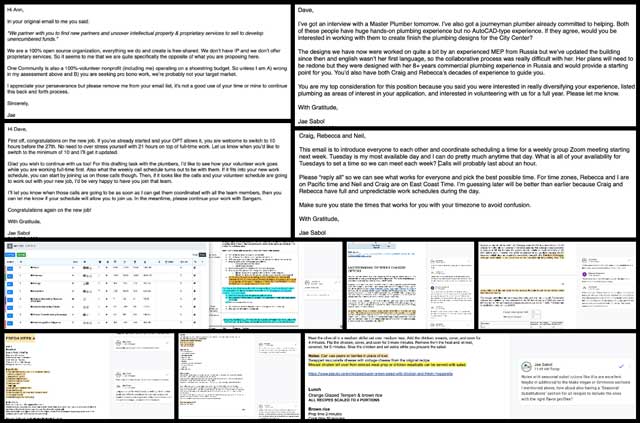Achieving Earth’s Sustainable Potential – One Community Weekly Progress Update #477
If ever there were a time for achieving Earth’s sustainable potential, it is now. We have the ability to create a sustainable world that will benefit all people and life on this planet. In so doing, we can address climate change, homelessness, food insecurity, social injustice and inequality, poverty and more. One Community is developing open source teacher/demonstration hubs to form a global collaboration of groups working on and evolving the open source and free-shared solutions needed to accomplish this.
- Here’s our project overview
- Here’s our world-change methodology
- Here’s how this becomes self-replicating
- Here’s how we are open source and free-sharing all the do-it-yourself designs

OUR MAIN OPEN SOURCE HUBS
Click on each icon to be taken to the corresponding Highest Good hub page.
One Community’s physical location will forward this movement as the first of many self-replicating teacher/demonstration communities, villages, and cities to be built around the world. This is the May 15th, 2022 edition (#477) of our weekly progress update detailing our team’s development and accomplishments:
Achieving Earth’s Sustainable Potential
One Community Progress Update #477
DONATE | COLLABORATE | HELP WITH LARGE-SCALE FUNDING
CLICK HERE IF YOU’D LIKE TO RECEIVE AN EMAIL EACH WEEK WHEN WE RELEASE A NEW UPDATE
YOU CAN ALSO JOIN US THROUGH SOCIAL MEDIA
ONE COMMUNITY WEEKLY UPDATE DETAILS
HIGHEST GOOD HOUSING PROGRESS
 One Community is achieving earth’s sustainable potential through Highest Good housing that is artistic and beautiful, more affordable, more space efficient, lasts longer, DIY buildable, and constructed with healthy and sustainable materials:
One Community is achieving earth’s sustainable potential through Highest Good housing that is artistic and beautiful, more affordable, more space efficient, lasts longer, DIY buildable, and constructed with healthy and sustainable materials:
- Learn about: Our Upcoming Crowdfunding Campaign
- Learn about the different village models: 7 Sustainable Village Models
- Visit the open source portals for the first two: Earthbag Village OS Hub | Straw Bale Village OS Hub
This week the core team made substantive comments on the Aircrete Compression Testing Final Report, edited and reviewed the comments that had been addressed, and re-wrote sections that needed attention. The core team also reviewed solar sizing work and asked that the pie charts be integrated into the summary writeup, reviewed Yuran’s responses to comments made on the walipini, aquapini, and zenapini content, and had the regular weekly meeting with the Center Hub team for which only Prathik was able to attend.
A different core team member also continued working with the assembly instructions for the Murphy bed. We checked the assembly instructions for the front part of the wall, bed framing perimeter, bed hardware, attachment of the bed frame to the wall, assembly of the benches and table and attachment of them to the bed frame, and the installation of the locking hardware for securing benches and table in the up position, helping in achieving earth’s sustainable potential. See pictures below related to this progress.
Dean Scholz (Architectural Designer) continued helping with the Earthbag Village (Pod 1) 4-dome cluster designs. This was week #247 of Dean’s work as he is finishing up the actual renders. The picture below shows a final render of the bathroom, but we realized in creating it that this is the ADA bathroom and it needs to be updated with the other bathroom we designed, helping in achieving earth’s sustainable potential.
Jose Luis Flores (Mechanical Engineer) completed his 94th week helping finish the Net-zero Bathroom component of the Earthbag Village. This week Jose Luis continued working on the size limitations of the rain barrel support structure of the Net-Zero Bathroom. He first completed the buckling analysis by determining the critical buckling load of the support column. He assumed the column was fixed and free ended and calculated the critical load. He then used that value and half the barrel weight to calculate the factor of safety which equaled to 19.5.
Buckling is a very unlikely cause of failure in the column. After brainstorming he decided that the bolts were one of the more likely contributors to failure in the structure. After reading literature pertaining to screw and bolt design, the first step was to determine the state of stress in the bolt used for the support beams.
Due to the deflection of the beams caused by the barrel weight, a tension and compression is created along the lower and upper areas of the beam respectively. This deflection will cause the bolt to have a moment acting on it, due to the frictional forces exerted on the bolt due to the bolt head and nut trying to slide with the change in length of the beam.
To determine the frictional force, the tightening load had to be calculated by gathering specifications from the literature and the bolt manufacturer. With these calculations, the bending stress acting on the bolt can be determined. After determining this value, a fatigue analysis will need to be conducted because of the cycling involved from the filling and emptying of the barrels causing a fluctuation of stresses, helping in achieving earth’s sustainable potential. The pictures below show some of this work.
The Compression Team consisting of Dominick Banuelos (Civil Engineering Intern), Jarot Tamba (Civil Engineering Intern), John Paul D. Matining (Civil Engineer Intern), and Marcus Nguyen (Civil Engineering Intern) completed their 33rd week helping with the Aircrete and earthbag compression testing. This week the Compression Testing Team responded to comments and made corrections/revisions to the Final Report. They looked through previous documents and added information to present to future readers from all of the documents created during the experimental phase, helping in achieving earth’s sustainable potential. Pictures below are related to this work.
Daniela Andrea Parada (Civil Engineering Student) completed her 27th week helping with the Aquapini & Walipini and Sustainable Roadways, Walkways, and Landscaping tutorial development. This week Daniela completed writing and editing the ADA Requirements section. She incorporated all the information she had written into the Roadways, Walkways, Gutters and Parking Lot report. This included adding images she had taken from the code in order to explain the narrative better. After reviewing any last errors Daniela then reviewed all comments from last week and this week.
She responded to questions on the ADA section and added more to the narrative for the roadways cost section. Daniela also rearranged some of the formatting/images. Lastly Daniela went back to the Roadways excel sheet to research information regarding the cost of excavation, helping in achieving earth’s sustainable potential. Pictures below are related to this work.
Yuran Qin (Volunteer Web Editor) completed her 25th week helping with web design. This week Yuran updated the FAQ section and created, added and linked new spreadsheets for the Sustainable Roadways, Walkways, and Landscaping page. She also added images to the Climate Battery live page and fixed the existing problems for the Aquapini & Walipini open source hub, helping in achieving earth’s sustainable potential. Pictures below are related to this work.
Shreyas Dayanand (Battery Research Engineer) also completed his 24th week helping with the solar microgrid design specifics related to electric vehicles and battery sizing. This week Shreyas answered questions and addressed comments throughout the doc, helping in achieving earth’s sustainable potential. Pictures below are related to this work.
Diwei Zhang (Mechanical Engineer) completed his 8th week of work, now focused on 3D modeling and analysis review for the Net-zero Bathroom component of the Earthbag Village. This week Diwei did a benchmark problem to demonstrate the Newton-Raphson method for the branched & looped multiple reservoirs water distribution network system by using Maltab. The code can be used for further water distribution of stored rainwater. He also created sheets for calculations of the rainwater harvesting system.
Monthly climate normals, average supply, total indoor water demand, indoor rainwater demand, outdoor rainwater demand, total rainwater demand, supply-to-demand ratio, and optimization of storage are included in the calculations. Entire calculations are produced based on a reference book Essential Rainwater Harvesting: A Guide to Home-Scale System Design (Sustainable Building Essential Series, 11) written by Rob Avis and Michella Avis, helping in achieving earth’s sustainable potential. Pictures below show some of this work.
Yushi (Zoey) Cai (Electrical Engineer Researcher) completed her 5th week helping with research focused on Sustainable Lightbulbs and Light Bulb Companies. This week Yushi kept on searching for light bulb replacements from #1 and #2 companies with higher luminous flux or lower power and the same functions. If the companies do not have the replacements meeting the requirements, she then searched for other ranked companies for the best replacement. Then research deeper for LED technology, helping in achieving earth’s sustainable potential. See below for some pictures related to this.
DUPLICABLE CITY CENTER PROGRESS
 One Community is achieving earth’s sustainable potential through a Duplicable and Sustainable City Center that is LEED Platinum certified/Sustainable, can feed 200 people at a time, provide laundry for over 300 people, is beautiful, spacious, and saves resources, money, and space:
One Community is achieving earth’s sustainable potential through a Duplicable and Sustainable City Center that is LEED Platinum certified/Sustainable, can feed 200 people at a time, provide laundry for over 300 people, is beautiful, spacious, and saves resources, money, and space:
- Learn about this building and it’s function: Duplicable City Center Open Source Hub
The core team also completed an extensive review and addition of content for the solar microgrid design specifics related to electric vehicles and battery sizing tutorial, helping in achieving earth’s sustainable potential. Pictures below are related to this work.
Luis Manuel Dominguez (Research Engineer) completed his 47th week helping with research related to the City Center Eco-spa designs. This week Luis worked on more documentation updates for the future website content. Along with this, he has been focusing on finding regulations and code that justify the circulation designations and turnover rates from the designs. Many of the parts manufacturers specify their design recommendations, but he is yet to find standardized legislation with tangible requirements. He aims to complete his research next week to continue on with his progress of finalizing the design documentation, helping in achieving earth’s sustainable potential. Pictures below are related to this work.
Venus Abdollahi (Architectural Designer) completed her 36th week helping finish the Duplicable City Center designs. This week Venus completed corrections for section C”-C” and G-G and made changes on section C’-C’ and C”-C” according to her supervisor’s feedback. She added columns and changed the thickness of the walls and floors and changed the position of some columns and walls, helping in achieving earth’s sustainable potential. See pictures below.
Huiya Yang (Volunteer Architectural Designer) completed her 31st week working on the Duplicable City Center architectural review and updates related to the structural code. This week, Huiya finished updating the doors in the Living Dome. She also accomplished the work of modeling Door 9 which is the freezer and cooler door in the Dining Dome, helping in achieving earth’s sustainable potential. Pictures of some of this work are below.
Yuxi Lu (Architectural Designer) also completed her 28th week working on the Duplicable City Center architectural review and updates related to the structural code. This week Yuxi met with the team and discussed the potential for pushing the walls of the Social and Dining dome on the 2nd floor open area back further to allow better circulation and visibility. The team concluded that there is the necessity of adding another column and have to see other impacts such as implications for the structure of the dome above. In addition, D7, 11, 12, and 14 door CAD elevation and section were added, helping in achieving earth’s sustainable potential. Pictures of some of this work are below.
Prathik Jain (Mechanical Engineer) completed his 14th week of work on the Duplicable City Center hub connectors design and analysis. This week Prathik researched and explored different methods to construct the dome in Revit. He constructed a geodesic glass dome. He also tried to add the DIY-designed bracket into and construct the dome, by doing this the actual model could be constructed and then exported to SolidWorks for structural analysis of the dome, helping in achieving earth’s sustainable potential. Pictures below show some of this work-in-progress.
Lam (Dave) T. Nguyen (Mechanical Engineer) completed his 6th week of work. This week Dave checked materials for the Eco-spa design in order to validate power needs, helping in achieving earth’s sustainable potential. This week, Dave double-checked energy demands from the Ultimate Classroom by going through each one of the data sources carefully. He also validated data by adding visual aids, such as pie charts, a comparison of our numbers with real-world energy consumption values, and a break-down of energy demands by each category, helping in achieving earth’s sustainable potential. Pictures below are related to this work.
Kamil Gajownik (Industrial/Product Designer) completed his 3rd week of work on the Duplicable City Center dormer window designs and assembly instructions. This week Kamil continued his design on the Dormer project by generating 3D concepts for both floors. Experimenting with similar heights and similar roof angles, he attempted to make the dormers look identical to each other for both floors. More visualizations will be required to select the most aesthetic and structurally sound design. He also communicated with a carpenter for more insight into how the frame will be constructed to ensure strength and meet industry standards, helping in achieving earth’s sustainable potential. Pictures below are related to this work.
Yujue Wang (Architectural Designer) also joined the team and completed her 1st week working on the interior design for the Duplicable City Center rental rooms. This week, Yujue continued the development of the Duplicable City Center Interior Design by researching wood furniture, researching room styles, drawing CAD floor plans, and designing the interior of a nature themed room.
The room uses wood as the main element, the furniture is wooden furniture, wood material, and green plants create a warm interior atmosphere. She designed two plan layouts and one of them was chosen for deepening the interior design. In the interior design stage, she tried two sofa options and three wall decoration options, helping in achieving earth’s sustainable potential. See below for pictures related to this work.
HIGHEST GOOD FOOD PROGRESS
 One Community is achieving earth’s sustainable potential through Highest Good food that is more diverse, more nutritious, locally grown and sustainable, and part of our open source botanical garden model to support and share bio-diversity:
One Community is achieving earth’s sustainable potential through Highest Good food that is more diverse, more nutritious, locally grown and sustainable, and part of our open source botanical garden model to support and share bio-diversity:
- Learn about the structures: Hoop House Hub | Aquapini & Walipini Open Source Hub
- See what we’ll be growing: Gardens & Hoop Houses | Large-scale Structures | Food Forest | TA
This week the core team continued with revising, edits, and answering and making more comments on the Chicken Coop Building Instruction document. The week was spent focusing on the roosting ladder and nesting boxes. We reviewed the distances of the perch separation on the nesting ladder, the materials list for the nesting boxes, and requested a blow up drawing of the nesting boxes for further clarification of some of the necessary measurements for the nesting box construction, helping in achieving earth’s sustainable potential. Pictures of some of this work are below.
A different core team member placed all the Transition Kitchen items in the SketchUp model according to size and dimensions taken from the Transition Kitchen spreadsheet list. We labeled each appliance according to the numbers in the spreadsheet and created a layout image, helping in achieving earth’s sustainable potential. See pictures below related to this progress.
Adam Weiss (Kitchen Operations Project Manager) completed his 12th week helping with the completion of the Transition Food Self-sufficiency Plan and related menu and meal plans. This week, Adam primarily worked on the 3-day block of recipes spreadsheets. He experimented with how to make the calculations work best in creating a readable, usable, cohesive recipe set to generate a master shopping list. Adam also had a couple of meetings with Jae and Marilyn and did more adding of suggestions or approving of Marilyn’s recipes, helping in achieving earth’s sustainable potential. The pictures below relate to this work.
Marilyn Nzegwu (Culinary Volunteer) completed her 5th week helping with the completion of the Transition Food Self-sufficiency Plan and related menu and meal plans. This week Marilyn continued recipe development and menu plans, focusing on recipes that will work with food ingredients for the 2-months meal plan. After having a meeting about a three-day menu block to input in a new spreadsheet that will scale the required ingredients to create shopping lists, she went on to create the first three-day menu block.
It is designed to put to good use all perishable food items in the kitchen for quality control. She used recipes without too many dietary restrictions and designed to serve Vegans and Omnivores, helping in achieving earth’s sustainable potential. The pictures below relate to this work.
HIGHEST GOOD EDUCATION PROGRESS
 One Community is achieving earth’s sustainable potential throughh Highest Good education that is for all ages, applicable in any environment, adaptable to individual needs, far exceeds traditional education standards, and more fun for both the teachers and the students. This component of One Community is about 95% complete with only the Open Source School Licensing and Ultimate Classroom construction and assembly details remaining to be finished. With over 8 years of work invested in the process, the sections below are all complete until we move onto the property and continue the development and open sourcing process with teachers and students – a development process that is built directly into the structure of the education program and everything else we’re creating too:
One Community is achieving earth’s sustainable potential throughh Highest Good education that is for all ages, applicable in any environment, adaptable to individual needs, far exceeds traditional education standards, and more fun for both the teachers and the students. This component of One Community is about 95% complete with only the Open Source School Licensing and Ultimate Classroom construction and assembly details remaining to be finished. With over 8 years of work invested in the process, the sections below are all complete until we move onto the property and continue the development and open sourcing process with teachers and students – a development process that is built directly into the structure of the education program and everything else we’re creating too:
- Program Overview: Education Open Source Hub
- How the components work together: How to use the Education for Life Program
- Lesson Plans for Life – Lesson Plans How-to
- Foundations of Outstanding Leaders, Teachers, and Communicators
- Curriculum for Life
- Teaching Strategies for Life
- Learning Tools and Toys for Life
- Evaluation and Evolution
This week, Adolph Karubanga (Certified Project Manager & Civil/Structural Engineer) completed his 8th week helping with the Ultimate Classroom structural engineering. This week, Adolph focused on finalization of the design and researched on conditions prescribed in LEED® standards (Leadership in Energy and Environmental Design standards). LEED® provides a framework for healthy, highly efficient, and cost-saving green buildings. He accessed a website link on the U.S Green Building Council, USGC (http://www.usgbc.org/guide/bdc.).
He commenced learning about the criterion followed by these standards including, the five critical areas of focus (sustainable site development, water savings, energy efficiency, materials selection, and indoor environmental quality). The structure will therefore be evaluated based on the rating system provided under the international codes of practice (IBC, CBC, and U.S codes) and LEED® standards, helping in achieving earth’s sustainable potential. See the related pictures below as examples of this work.
HIGHEST GOOD SOCIETY PROGRESS
 One Community is achieving earth’s sustainable potential through a Highest Good society approach to living that is founded on fulfilled living, the study of meeting human needs, Community, and making a difference in the world:
One Community is achieving earth’s sustainable potential through a Highest Good society approach to living that is founded on fulfilled living, the study of meeting human needs, Community, and making a difference in the world:
- Read the Highest Good society overview: Highest Good Society
- Learn about the model for fulfilled living and sharing: A Day in the Life
- Learn about the 4 economic models: RBE | For-profit | Non-profit | Entrepreneurship
- Learn about our open source community collaboration and management software: The Highest Good Network
This week the core team completed 30 hours managing One Community volunteer-work review not included above, emails, social media accounts, web development, new bug identification and bug fix integration for the Highest Good Network software, and interviewing and getting set up new volunteer team members, helping in achieving earth’s sustainable potential. Pictures below show some of this.
Miguel Fernandes (Full-stack Developer) completed his 10th week helping with the Highest Good Network software. This week, Miguel started by working on the new role, “Owner”, adjusting its permissions. He had a meeting with Nicky and talked with Chris to figure out how the leaderboard component worked, then changed a pipeline on MongoDB to get all users in the system to show up on the Owner’s dashboard. He tested the Owner profile and came to the conclusion it’s done. After that Miguel started working on another new role, Mentor, making changes on the permissions for that role and for the Manager role, helping in achieving earth’s sustainable potential. Pictures of some of this work are below.
Elyse Lam (Software Developer) completed her 9th week helping with the Highest Good Network software. This week, Elyse worked on fixing the badge assignment bug. Badges in the same category should be removed once a badge in the same category with higher hours is added. When an instance of a Badge is created, she worked to filter the badge.category for the highest value in req.body.totalHrs, and that’s the only badge of that category that will be updated to the user profile, helping in achieving earth’s sustainable potential. Pictures of some of this work are below.
Phu Nguyen (Software Developer) completed his 8th week helping with the Highest Good Network software. This week, Phu finished adding a calendar and fixed a bug for the calendar not showing up once clicked. There was a minor error in the end date of the user though, it kept changing to the newest day. Phu will fix it next week. For the task contribution, Phu added a custom expanding resources column, so it would look more professional. He also noticed an error on the resources filter that it did not show the resources (users) when the filter was applied, helping in achieving earth’s sustainable potential. Pictures of some of this work are below.
Yiyun Tan (Software Engineer) completed her 6th week helping with the Highest Good Network software. This week Yiyun reviewed and approved several PRs both frontend and backend. She put most of her time on creating the ability for a user to see the timezone difference of others’. The PR is out and waiting for review now. Other than that, the development of the management-dashboard starts next week. Yiyun and Eiki and David will have the first meeting to discuss development details next Sunday, helping in achieving earth’s sustainable potential. Pictures of some of this work are below.
Ron Magpantay (Software Engineer) completed his 5th week helping with the Highest Good Network software. This week, Ron resolved a bug that was causing spacing issues in the Highest Good Network application. He assisted with pull requests to test changes that were made to the application and ensured that the changes did not have any conflicts with any existing code. In addition, after consulting with another team member, he identified a possible solution to the duplicate user creation bug that will likely come in a fix during this upcoming week, helping in achieving earth’s sustainable potential. See pictures below for some of this work.
Nicky Chen (Full Stack Developer) completed his 4th week helping with the Highest Good Network software. This week, Nicky was mostly focused on helping out various people, helping Elyse out with a badge problem she was running into on the backend, meeting with Miguel to discuss the architecture of his permissions feature and going through the frontend and backend code with him to figure out a MongoDB error having to do with owner, which ended up being a MongDB thing and not a Frontend/Backend issue.
He also helped out Phu with the report component and will continue to do so next week on more resources architecture. He was able to dive a bit more into the timezone persistence issue that Jae was seeing with timezone not persisting on the non-new page, and will work on a PR for it next week, helping in achieving earth’s sustainable potential. The pictures below relate to this work.
Jipeng Chen (Software Development Engineer) completed his 4th week helping with the Highest Good Network software. Jipeng was working on the oauth 2.0 send email task and finished the first version of pr. GCP refresh token will expire in 7 days when the project is in testing state so he updated the project to prod state to make sure the token will not expire in 7 days. He did several testing scenarios locally for sending emails and all the scenarios are looking good, helping in achieving earth’s sustainable potential. The pictures below relate to this work.
David Okeke (Software Engineer) also completed his 4th week helping with the Highest Good Network software. This week David completed more functionality for visualizing team member tasks. A large part of the work was discovering the connection between tasks and time entries. This connection was found in the project property of both task and time entries, so he set it up to fetch for both task and time entries and matched them together for the display, helping in achieving earth’s sustainable potential. See pictures below for some of this work.
Steven (Shaoyu) Wang (Software Engineer) completed his 2nd week helping with the Highest Good Network software. This week Steven helped review and approved a PR that fixed the location persistence bug. Then he spent most of his time researching the behavior and the data flow of the application. He figured out the problem, fixed it, and raised the PR to remove checking duplicate phone numbers when creating new users and to instantly update the user management table when adding/deleting new users, helping in achieving earth’s sustainable potential. See pictures below for some of this work.
Eiki Kan (Software Engineer) also joined the team and completed his 1st week helping with the Highest Good Network software, helping in achieving earth’s sustainable potential. This week, Eiki completed his orientation, onboarding, and dev environment setup. He then performed an initial scan of the code base and refamiliarized himself with the related React, Redux, and JavaScript tools.
He also helped other team members with coding problems, set up a plan for the Management Dashboard, brainstormed ways and chose a way to assign and breakdown tasks (deciding on a backend/frontend work breakdown structure), and watched at least 5 weekly summary videos left by the previous designer to see what has been done and his thought process. He then broke down the specifics of what has already been done by reading the documentation and shared his findings in the Management Dashboard Outline google doc to save other team members time, helping in achieving earth’s sustainable potential. See pictures below for some of this work.
AND WE PRODUCED THIS WEEKLY UPDATES BLOG – CLICK HERE TO SUBSCRIBE
FOLLOW ONE COMMUNITY’S PROGRESS (click icons for our pages)
INVESTOR PAGES
GET INVOLVED
DONATE | WAYS ANYONE CAN HELP | MEMBERSHIP
CLICK HERE FOR ALL PAST UPDATES
 One Community
One Community



